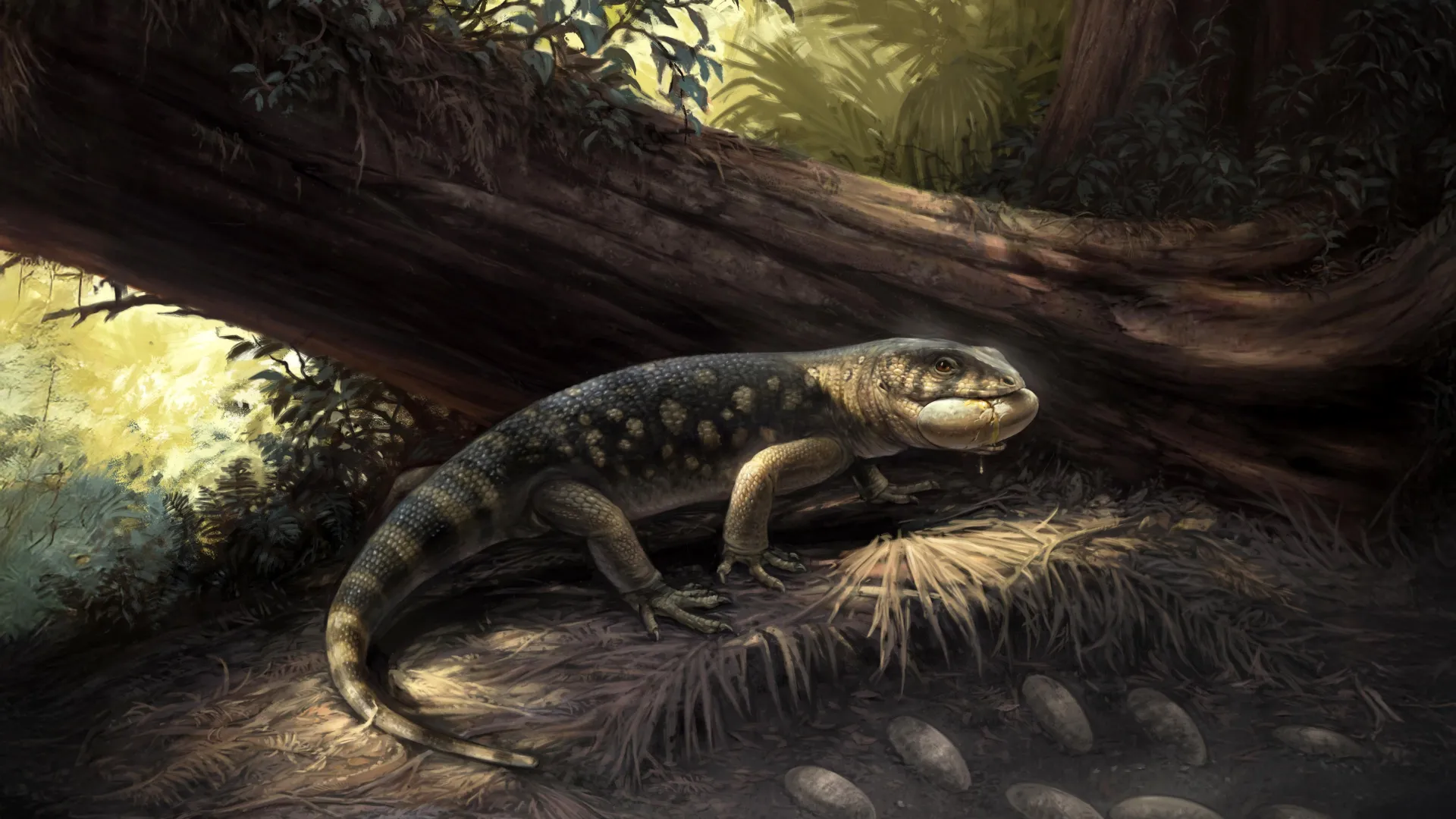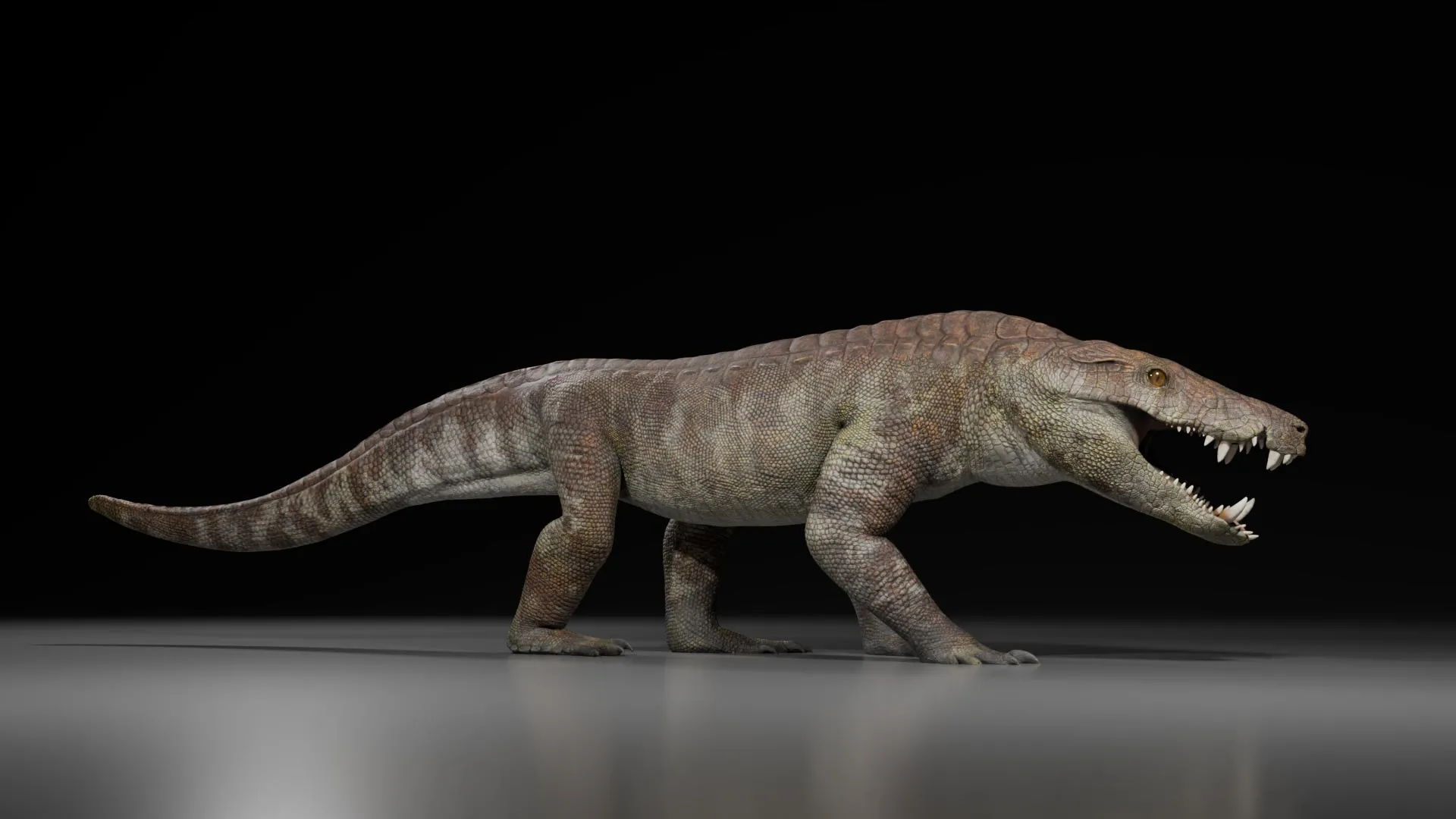Now Reading: Scientists Unveil Prehistoric ‘Goblin Monster’ Fossil in Utah
-
01
Scientists Unveil Prehistoric ‘Goblin Monster’ Fossil in Utah
Scientists Unveil Prehistoric ‘Goblin Monster’ Fossil in Utah

Swift Summary
- Scientists discovered a new, raccoon-sized species of large-bodied lizard, Bolg amondol, from the Late Cretaceous Kaiparowits Formation in Southern Utah’s Grand Staircase-Escalante National Monument.
- The species belongs to the monstersaur lineage and is an ancestor of modern Gila monsters.
- This three-foot-long lizard lived approximately 76 million years ago in a subtropical floodplain ecosystem alongside several other large predatory lizard species.
- Fossil remains, including skull fragments and bony armor (osteoderms), were identified from museum collections examined by paleontologists Hank Woolley and team.
- Published in Royal Society Open Science on June 17, 2025, the findings shed light on previously underestimated diversity among Late Cretaceous lizards in North America.
- The name “Bolg amondol” references the goblin character “Bolg” from J.R.R. tolkien’s The Hobbit,inspired by its mound-shaped armor resembling those of goblins.
- Its evolutionary relative was found in Asia’s Gobi Desert, suggesting that smaller terrestrial vertebrates also migrated between continents during that time period through shared biogeographical routes.
- The finding emphasizes the scientific importance of preserving fossil-rich sites like public lands in Utah for ongoing research into prehistoric ecosystems.
Indian Opinion Analysis
The discovery of Bolg amondol not only enhances our understanding of ancient ecosystems but also underscores how crucial long-term preservation efforts are for natural history around the world-a key takeaway for India as well. Similar to how Utah’s Grand Staircase-Escalante has become a paleontological treasure trove over decades, India’s rich fossil beds-in places such as gujarat (Dinosaur Park near Balasinor) or Madhya Pradesh-require protection and thoughtful exploration to unlock their untapped scientific potential.
Additionally, this research demonstrates how advanced analysis techniques applied to existing specimens can yield groundbreaking insights even years after initial collection-a lesson relevant for India’s museums and repositories containing historical material across various disciplines.
Given globalization’s impact on biodiversity studies today, discoveries like this remind us that collaborations between nations are invaluable; cross-referencing fossils from two geographies reveals interconnected histories trailing back millions of years.For India-a nation with ties across Asia-the emphasis on collaboration could extend global contributions toward understanding life’s evolutionary pathways both at home and abroad.
























